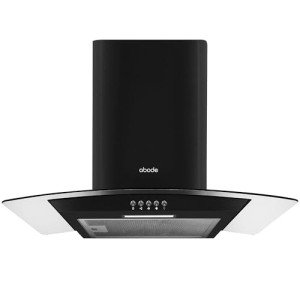
Extractor Cooker Hood
FollowOverview
-
Sectors Administrative
-
Posted Jobs 0
Company Description
Five Killer Quora Answers On Cooker Extractor Fans
Understanding Cooker Extractor Fans: A Comprehensive Guide
Cooking is an art that integrates flavor with technique, and it typically features a little bit of mess. One of the vital components in maintaining a tidy and healthy kitchen environment is the cooker extractor fan. These gadgets become part of the kitchen’s ventilation system, designed to blend away smoke, steam, odors, and air-borne particles that can collect during cooking. This blog site post aims to offer an in-depth understanding of cooker extractor fans, their types, advantages, installation, upkeep tips, and answers to regularly asked questions.
What is a Cooker Extractor Fan?
A cooker extractor fan, likewise referred to as a range hood or kitchen hood, is a device installed above the cooking location. It functions to filter and expel unwanted smells, steam, and airborne grease, therefore keeping good air quality in the kitchen. These fans been available in numerous sizes, designs, and performances, accommodating various kitchen designs and cooking designs.
Table 1: Types of Cooker Extractor Fans
| Type | Description | Advantages | Drawbacks |
|---|---|---|---|
| Wall-Mounted | Set up on the wall above the cooking range | Space-efficient, aesthetic appeal | Requires wall space and ducting |
| Island | Hangs above kitchen islands | Elegant, suitable for open designs | More costly, needs ceiling support |
| Under-Cabinet | Fits beneath kitchen cabinets | Compact, does not take up additional space | Restricted power, may need ducting |
| Downdraft | Pop-up fan integrated into the cooktop | Minimalistic style, conserves space | Less effective than ducted options |
| Ceiling-Mounted | Set up in the ceiling, frequently in bigger kitchens | Covers big areas, modern style | Professional installation needed |
The Importance of Cooker Extractor Fans
-
Improved Air Quality: Cooking typically releases damaging contaminants and grease particles. An extractor fan assists remove these contaminants, making sure healthier air in the kitchen.
-
Smell Control: Different foods produce distinct smells. A good cooker extractor fan effectively reduces sticking around odors, making the kitchen a pleasant area.
-
Wetness Reduction: Steam generated during cooking can cause moisture accumulation, which might promote mold growth. An extractor fan helps regulate humidity levels in the kitchen.
-
Cleaner Environment: By capturing grease and vapors, extractor fans contribute to a cleaner kitchen environment, lowering the requirement for frequent cleansing.
Selecting the Right Extractor Fan
Choosing an extractor fan involves thinking about numerous aspects, including kitchen size, design, and cooking habits. Here are the bottom lines to keep in mind:
Table 2: Factors to Consider When Choosing an Extractor Fan
| Factor | Factor to consider |
|---|---|
| Kitchen Size | Larger kitchens may need more effective fans |
| Ducted vs. Ductless | Ducted fans vent outdoors; ductless recirculate air with filters |
| Sound Level | Check for fan sound ratings; quieter models are more effective |
| CFM Rating | Consider the fan’s air flow effectiveness, typically determined in Cubic Feet per Minute (CFM) |
| Style | Select a design that matches your kitchen decoration |
Setup and Maintenance
Proper installation and regular upkeep are important for optimal efficiency.
Setup Tips
- Follow Manufacturer’s Instructions: Always consult the installation manual for specific guidelines.
- Employ a Professional: For ducted options, professional setup might be required to ensure correct venting.
- Positioning: The fan must be installed at the proper height above the cooking range, typically 20– 30 inches for electric and 24– 30 inches for gas stoves.
Maintenance Tips
- Clean Filters Regularly: Most extractor fans come with removable filters that must be cleaned up or changed often to guarantee performance.
- Check Fan Blade: Ensure the fan blades are tidy to avoid motor pressure.
- Check Ducts: For ducted models, routine assessment and cleansing of ducts can prevent obstructions and improve airflow.
Regularly Asked Questions (FAQ)
-
How typically should I clean my cooker extractor fan?
- It is advised to clean up the fan’s filters each month and to deep clean the whole system every 6 months.
-
Do I need to use a ducted extractor fan?
- Ducted fans are more efficient as they vent air outside. Nevertheless, if setup is a problem, ductless choices with activated charcoal filters appropriate options.
-
What is the perfect CFM for my kitchen?

- A general guideline is that the CFM ought to be 100 for every 10,000 BTUs of the stove. For average cooking, a fan with a CFM score of 300-600 is typically appropriate.
-
Are extractor fans loud?
- Sound levels differ. When picking a fan, look for designs with lower sones (a measure of loudness), preferably listed below 3 for a quieter operation.
-
Can I set up an extractor fan myself?
- While some models, like under-cabinet fans, might be much easier for DIY setup, ducted models typically need professional assistance.
Cooker extractor fans play a vital function in boosting both the functionality and convenience of a kitchen. With various types offered, understanding their features, benefits, and maintenance requirements can help property owners make informed choices. Whether cooking an easy meal or crafting a gourmet masterpiece, a well-ventilated kitchen makes all the distinction. Purchasing an appropriate extractor fan not only enhances air quality however likewise adds to a cleaner, more enjoyable cooking environment.
